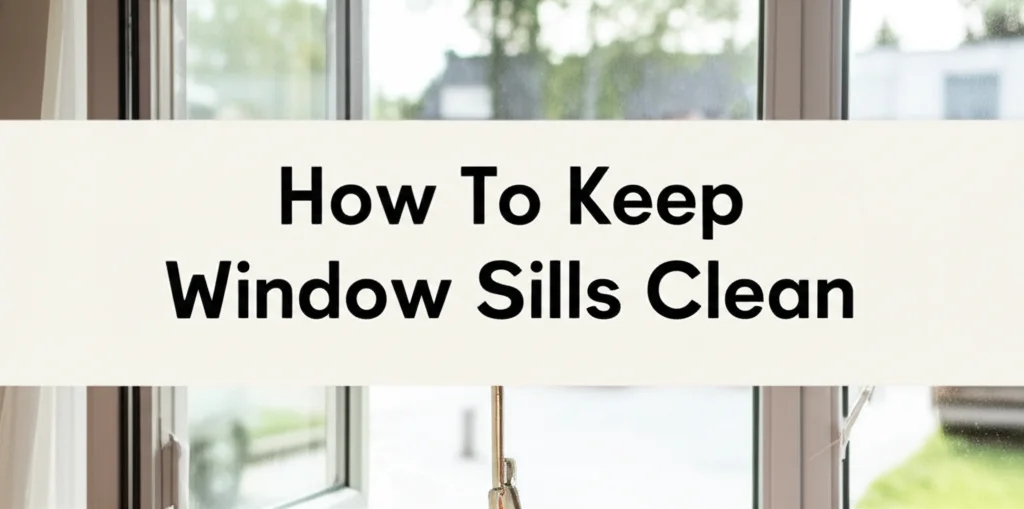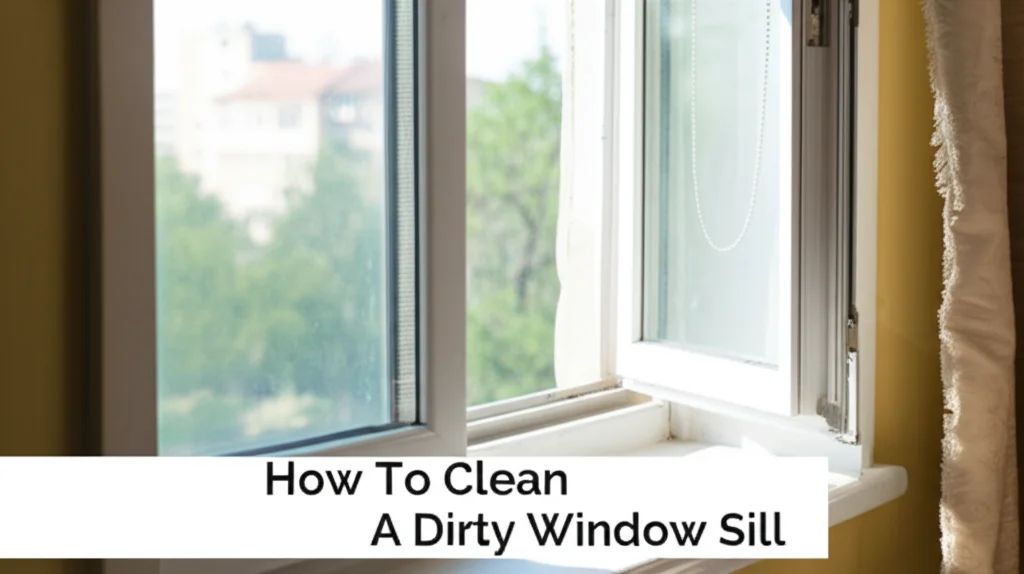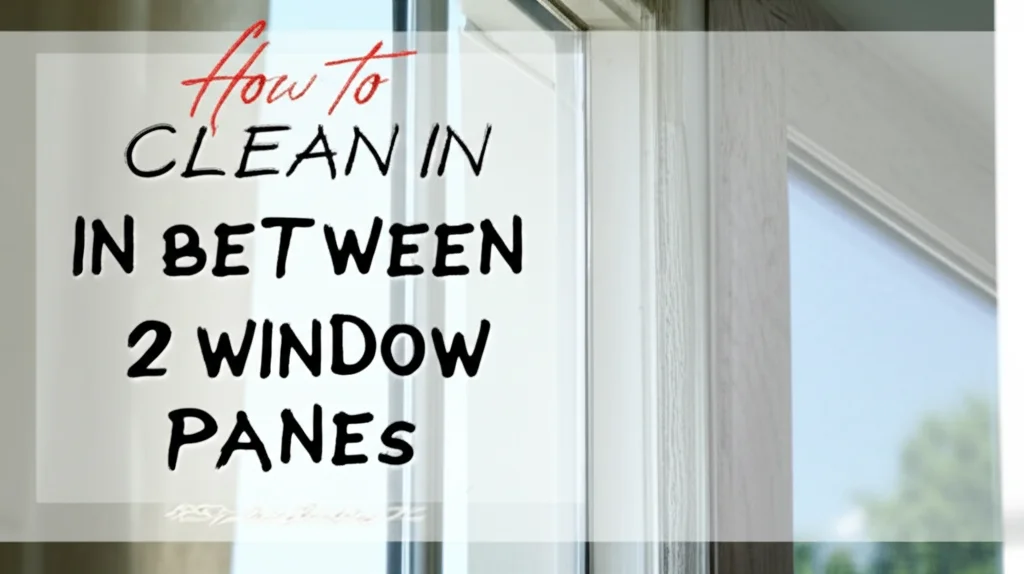· Home Cleaning · 7 min read
How To Keep Window Sills Clean

Sparkling Clean Window Sills: A Simple Guide
Ever notice how quickly window sills get dirty? They’re magnets for dust, dirt, pollen, and even insect debris. Keeping your window sills clean isn’t just about aesthetics; it’s also about preventing mold growth and maintaining the integrity of your windows. This article will show you how to keep window sills clean, offering practical tips and techniques for a spotless finish. We’ll cover everything from quick daily maintenance to deep cleaning methods for different materials. Let’s get started on achieving those sparkling clean window sills!
Quick Answer: To keep window sills clean, regularly dust or vacuum them, wipe down with a damp cloth and mild detergent, and address spills immediately. For tougher grime, use a specialized cleaner appropriate for the sill material.
Takeaway:
- Dust or vacuum window sills weekly.
- Wipe down with a mild cleaning solution regularly.
- Address spills immediately to prevent staining.
- Choose cleaners appropriate for your sill material.
Why Regular Window Sill Cleaning Matters
Window sills often get overlooked during cleaning routines, but they accumulate dirt surprisingly fast. Think about it – they’re exposed to the elements, catch rainwater runoff, and collect dust blown in from open windows. Regular cleaning prevents this buildup from becoming stubborn and damaging. Ignoring your window sills can lead to paint deterioration, wood rot, and even mold growth, especially in humid climates. A little effort regularly saves you from bigger problems down the road.
Identifying Your Window Sill Material
Before you start cleaning, it’s crucial to know what your window sills are made of. Different materials require different cleaning approaches. Using the wrong cleaner can cause damage, discoloration, or etching. Common window sill materials include:
- Wood: Often painted or stained, wood sills are susceptible to water damage.
- Vinyl: Durable and low-maintenance, vinyl sills are resistant to moisture.
- Aluminum: Lightweight and corrosion-resistant, aluminum sills are easy to clean.
- Stone (Marble, Granite): These require gentle cleaners to avoid etching or damage.
- Composite: A blend of materials, composite sills often mimic wood but are more durable.
Once you’ve identified the material, you can choose the appropriate cleaning method.
Daily & Weekly Maintenance: Preventing Grime Buildup
The easiest way to keep window sills clean is to prevent dirt from accumulating in the first place. A little daily or weekly maintenance goes a long way. Here’s a simple routine:
- Daily Dusting: Use a microfiber cloth or a dusting wand to remove loose dust and debris. This takes just a minute or two per window.
- Weekly Vacuuming: For textured sills or those with crevices, use a vacuum cleaner with a brush attachment. This gets into hard-to-reach areas.
- Immediate Spill Cleanup: If something spills on the sill, wipe it up immediately. Don’t let it sit and dry, as this can lead to staining.
- Check for Debris: Regularly inspect the sills for leaves, insects, or other debris that may have accumulated.
This proactive approach minimizes the need for deep cleaning. You can also consider using window film to reduce dust accumulation on the sill.
Deep Cleaning Window Sills: Step-by-Step Guide
When your window sills need a more thorough cleaning, follow these steps. This method works well for most materials, but always test in an inconspicuous area first.
- Remove Loose Debris: Vacuum or brush away any loose dirt, dust, or debris.
- Prepare Cleaning Solution: Mix a mild dish soap with warm water. For tougher grime, you can add a splash of white vinegar.
- Apply Cleaning Solution: Dip a soft cloth or sponge into the cleaning solution and wring out excess water. Gently wipe down the window sill, paying attention to corners and crevices.
- Rinse with Clean Water: Use a clean, damp cloth to rinse away any soap residue.
- Dry Thoroughly: Dry the sill with a clean, dry cloth. This prevents water spots and potential damage.
For stubborn stains, let the cleaning solution sit for a few minutes before wiping. You can also use a soft-bristled brush to scrub gently. If you’re looking for more information on floor cleaning, you might find this article helpful: https://www.beacleaner.com/how-to-clean-floor-grout-without-scrubbing/.
Cleaning Specific Window Sill Materials
Different materials require slightly different cleaning approaches. Here’s a guide for some common types:
- Wood Sills: Avoid excessive water, as it can damage the wood. Use a damp cloth and mild soap. For stubborn stains, use a wood cleaner specifically designed for painted or stained surfaces.
- Vinyl Sills: Vinyl is durable and easy to clean. Use a mild soap and water solution. You can also use a vinyl cleaner for extra shine.
- Aluminum Sills: Aluminum is resistant to corrosion. Use a mild soap and water solution. For tough stains, you can use a specialized aluminum cleaner.
- Stone Sills: Stone is porous and can be damaged by harsh chemicals. Use a pH-neutral stone cleaner. Avoid vinegar, lemon juice, and other acidic cleaners.
- Composite Sills: Follow the manufacturer’s instructions for cleaning composite sills. Generally, a mild soap and water solution is sufficient.
Always test any cleaning solution in an inconspicuous area before applying it to the entire sill. If you’re dealing with mold, check out this resource: https://www.beacleaner.com/how-to-remove-mold-from-painted-walls/.
Dealing with Stubborn Stains & Grime
Sometimes, a simple soap and water solution isn’t enough. Here are some tips for tackling stubborn stains:
- Grease: Use a degreasing cleaner or a paste of baking soda and water.
- Mold & Mildew: Mix equal parts water and white vinegar. Apply to the affected area, let it sit for 10-15 minutes, and then scrub with a brush.
- Hard Water Stains: Use a solution of vinegar and water. Apply to the stains, let it sit for a few minutes, and then scrub with a brush.
- Insect Residue: Use a bug and tar remover or a solution of warm water and dish soap.
Always wear gloves when dealing with harsh chemicals or mold. Remember to rinse thoroughly after using any cleaning solution. If you’re struggling with residue from cleaning products, this article might help: https://www.beacleaner.com/how-to-remove-baking-soda-residue-from-carpet/.
FAQ: Your Window Sill Cleaning Questions Answered
Q: How often should I deep clean my window sills? A: Deep clean your window sills at least twice a year, or more often if they are exposed to harsh weather conditions or heavy dirt accumulation. Regular maintenance can reduce the frequency of deep cleaning.
Q: Can I use bleach to clean my window sills? A: While bleach can be effective at killing mold, it can also damage certain materials and discolor others. It’s generally best to avoid bleach and use a vinegar and water solution instead.
Q: What’s the best way to clean window sills with lots of small crevices? A: Use a vacuum cleaner with a brush attachment to remove loose debris. Then, use a cotton swab or a toothbrush dipped in cleaning solution to clean the crevices.
Q: How can I prevent mold from growing on my window sills? A: Ensure proper ventilation, address water leaks promptly, and regularly clean your window sills to prevent moisture buildup.
Q: Is it safe to use a steam cleaner on window sills? A: Steam cleaning can be effective, but it’s important to check the material of your window sills first. Avoid using steam on wood sills, as the moisture can cause damage.
Conclusion: Enjoy Sparkling, Clean Window Sills
Keeping window sills clean doesn’t have to be a chore. By incorporating regular dusting and wiping into your routine, and tackling deep cleaning a couple of times a year, you can maintain sparkling, clean window sills. Remember to identify your sill material and use appropriate cleaning solutions. A little effort will not only improve the appearance of your home but also protect your windows from damage. So, grab a cloth and get cleaning – your windows will thank you! For more cleaning tips and tricks, explore our other articles, like this one on cleaning vinyl plank flooring: https://www.beacleaner.com/how-to-clean-vinyl-plank-flooring/.




